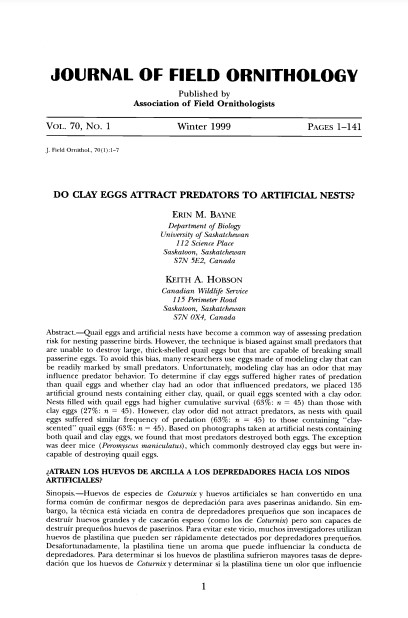Do clay eggs attract predators to artificial nests?
Bosque Modelo:
Prince Albert
Temática:
Conservación
Tipo de documento:
Artículo científico
Resumen
Quail eggs and artificial nests have become a common way of assessing predation risk for nesting passerine birds. However, the technique is biased against small predators that are unable to destroy large, thick-shelled quail eggs but that are capable of breaking small passerineggs. To avoid this bias, many researchers use eggs made of modeling clay that can be readily marked by small predators. Unfortunately, modeling clay has an odor that may influence predator behavior. To determine if clay eggs suffered higher rates of predation than quail eggs and whether clay had an odor that influenced predators, we placed 135 artificial ground nests containing either clay, quail, or quail eggs scented with a clay odor. Nests filled with quail eggs had higher cumulative survival (63%: n = 45) than those with clay eggs (27%: n = 45). However, clay odor did not attract predators, as nests with quail eggs suffered similar frequency of predation (63%: n = 45) to those containing "clayscented" quail eggs (63%: n = 45). Based on photographs taken at artificial nests containing both quail and clay eggs, we found that most predators destroyed both eggs. The exception was deer mice (Peromyscus maniculatus), which commonly destroyed clay eggs but were incapable of destroying quail eggs.
Información Bibliográfica
Autor:
Bayne, EM and KA Hobson.
Revista:
Journal of Field Ornithology
Año:
1999
N°:
-
País :
Canadá
Páginas:
1 - 7
Volumen:
70
Idioma:
Ingles
Palabras claves
Forest inventory Habitat eggs birds





